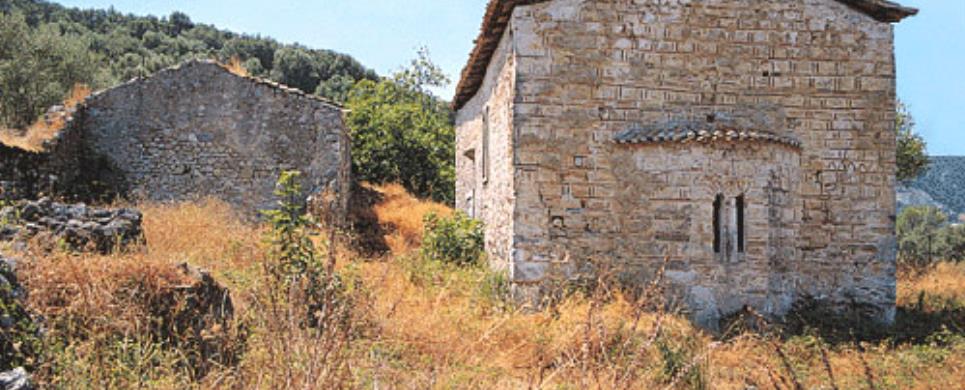Listed 8 sub titles with search on: Sights for wider area of: "LEFKADA Town IONIAN ISLANDS" .
LEFKADA (Town) IONIAN ISLANDS
Lefkada is impressive even as it first greets the visitor, as he crosses the narrow
strip of dry land and the 50-metre long floating bridge from the coast of Aitoloakarnania.
The bridge turns around on itself allowing small boats to pass through the canal
of Lefkada. Gyra is one of Lefkada's most important natural beauties. This narrow
strip of white sand, 7 kilometres long, which embraces the lagoon on the north
of the island, makes the landscape quite special. Gyra begins from the point almost
behind the Kastro, creating Ammoglossa ('sand tongue') and reaching as far as
the other side, beyond the town. Inside the lagoon is the 'ivari,' where fish
are bred in special, traditional wicker baskets and grow within natural conditions.
The lagoon of Lefkada is a wonderful wetland inhabited by many and rare species
of bird, such as swans, pelicans, herons, wild ducks, wild geese, coots and others.
This extract is cited April 2004 from the Prefecture of Lefkada URL below, which contains images
The building which today houses the Town Hall was built during the period of British rule.



At the entrance to the island, like a silent fortress and testimony to others eras, stands the castle of Santa Maura. It once embraced the capital and closed off the road for enemies and pirates. The castle was built around 1300 by the Frankish ruler Giovanni Orsini when he was given Lefkada on his marriage to the daughter of the Despot of Epirus, Nikiforos I, as part of the dowry she brought with her. It is one of the most imposing castles of its era and is an excellent example of Medieval fortress architecture. The castle was conquered by the Turks in 1479 who built a large, arched bridge with 360 arches, which cut across the lagoon from the coast to Kalkanis. This bridge supported the pipes of the Turkish aqueduct used to bring water to the castle. The bridge dominated the whole area but was destroyed, however, in the earthquakes. Some traces of its remains can be seen within the lagoon. The various conquerors who passed through have left indelible marks on the castle, which put up a courageous resistance to even the most powerful of earthquakes. The church of Ayia Mavra (Santa Maura) which is inside the castle is fully preserved. The castle is currently undergoing careful restoration work in order to restore it to its original design. On entering the town the visitor is welcomed by the great poets of Lefkada: the park of the poets contains the busts of Aristotelis Valaoritis, Angelos Sikelianos and Lafcadio Hearn as well as that of Kleareti Dipla-Malamou.
This extract is cited April 2004 from the Prefecture of Lefkada URL below, which contains images






TSOUKALADES (Village) LEFKADA
LEFKADA (Town) IONIAN ISLANDS
Behind Saint Spyridon Square is the house which was the birthplace of the scholar and translator Lefkadio Hearn.



Beside the library is the house where the great poet Aggelos Sikelianos was born.




APOLPENA (Village) LEFKADA
The monument is located in the village of Apolpaina, 2 km. to
the south of Leucas. It is a single-aisled, wooden-roofed church, with a three-sided
apse at the east, which has a bilobe window. The walls are built with unworked
stones but the lower parts and the apse are distinguished by the use of the "cloisonne"
masonry (stones enclosed by bricks). The main entrance is in the north wall of
the church. Fragments of the wall paintings are preserved on the south and east
walls of the interior. The east wall was covered with a monumental representation
of the Ascension, which has been removed and is now kept in the Byzantine Museum
of Athens.
The
church of Panaghia Hodeghetria was the catholicon (main church) of a monastery.
It was built in the middle of the 15th century and is one of the oldest Byzantine
monuments on Leucas. According to tradition, in this monastery hermited Helen
Palaeologhina, sister of John VIII Palaeologos and mother-in-law of the last duke
of Leucas, Leonardos II Tokkos. The iconographic program of the wall paintings
in the church is probably connected to her. The frescoes are dated to the middle
of the 15th century and are distinguished for the fine workmanship. In the beginning
of the 18th century, the church became the metochion (dependence) of the monastery
of Saint John Theologos at Karya, and had considerable real estate until 1927,
when it was purchased by the Greek state.
The south wall of the enclosure and its north supporting wall were
reconstructed in 1977. The lintel of the gate of the circuit wall and its Byzantine
inscription were cleared and restored and the pictorial decoration of the walls
was freed of all the recent coatings. Consolidation work of the masonry was carried
out in 1960 and 1980.
The monument is used as a church but opens only on certain days of
the year.
In 1960, the greatest part of the wall paintings, which were painted
over, was revealed. Their cleaning was completed in 1969, under the auspices of
the Archaeological Society, and 14 fragments were removed and transferred to the
conservation workshop of the Byzantine Museum in Athens.
LEFKADA (Town) IONIAN ISLANDS
The central square of the town. The name is taken from the adjacent church of the same name which dominates the square. Around about there are coffee shops, confectioneries, restaurants.



Receive our daily Newsletter with all the latest updates on the Greek Travel industry.
Subscribe now!